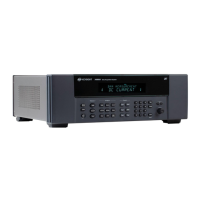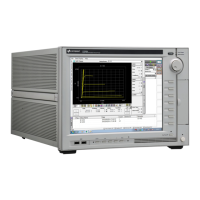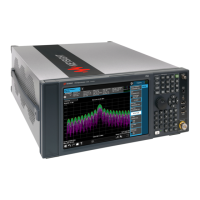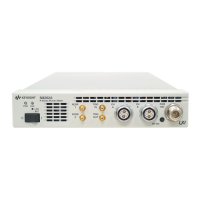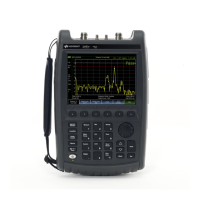Programming Examples 5
Keysight Models 6811C, 6812C, and 6813C Programming Guide 239
Step and pulse transients
Step 1 Set the functions that you do not want to generate transients to FIXed
mode. A convenient way to do this is with the *RST command. Then set
the mode of the function that will generate the transient to STEP or
PULSe as required. For example, to enable the voltage function to
generate a single triggered output voltage change, use:
*RST
VOLTage:MODE STEP
Step 2 Set the triggered level of the function that will generate the transient.
For example, if the previously programmed voltage function is going to
step the output voltage amplitude to 150 volts upon receipt of a
trigger, use:
VOLTage:TRIGger 150
Step 3 Select the trigger source that will generate the trigger. For example, to
select the external Trigger In BNC connector as the trigger source, use:
TRIGger:TRANsient:SOURce EXTernal
Trigger sources are discussed in detail under “Triggering Output
Changes” on page 244.
Step 4 Only perform this step if you have selected PULSE as the transient
mode in Step 1. Specify the pulse count, the pulse period, and then
either the duty cycle or the pulse width using the following commands:
PULSe:COUNt 1 specifies 1 output pulse
PULSe:PERiod 1 specifies a pulse period of 1 second
PULSe:DCYCle 50 specifies a duty cycle of 50%
PULSe:WIDTh .5 specifies a pulse width of .5 seconds
(not necessary in this case, since a
duty cycle has already been specified)
